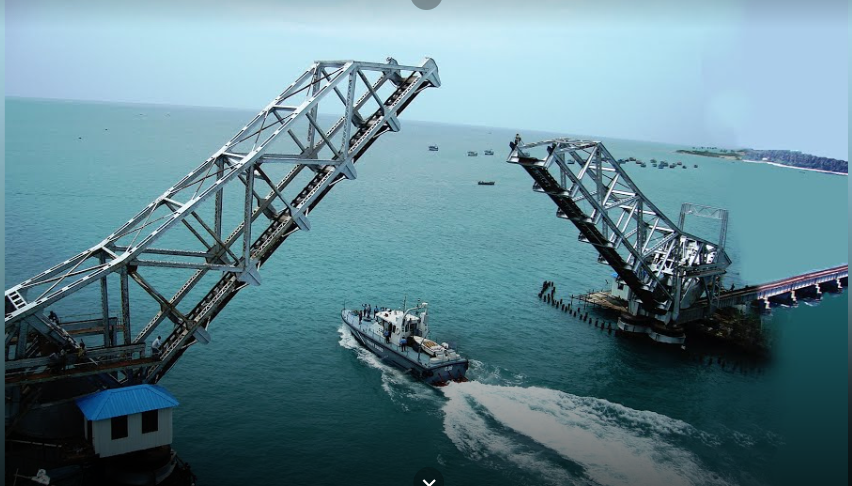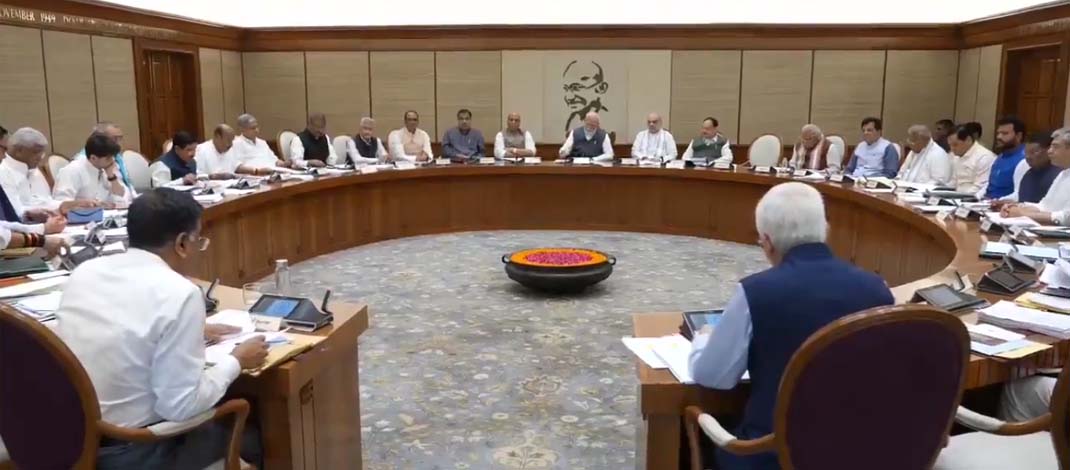- Courses
- GS Full Course 1 Year
- GS Full Course 2 Year
- GS Full Course 3 Year
- GS Full Course Till Selection
- Online Program
- GS Recorded Course
- NCERT (Recorded 500+ Hours)
- Polity Recorded Course
- Geography Recorded Course
- Economy Recorded Course
- AMAC Recorded Course
- Modern India, Post Independence & World History
- Environment Recoded Course
- Governance Recoded Course
- Science & Tech. Recoded Course
- International Relations and Internal Security Recorded Course
- Disaster Management Module Course
- Ethics Recoded Course
- Essay Recoded Course
- Current Affairs Recoded Course
- CSAT
- 5 LAYERED ARJUNA Mentorship
- Public Administration Optional
- ABOUT US
- OUR TOPPERS
- TEST SERIES
- FREE STUDY MATERIAL
- VIDEOS
- CONTACT US
Railway Panel Formed After CRS Flags 'Lapses' in Pamban Bridge Construction
Railway Panel Formed After CRS Flags 'Lapses' in Pamban Bridge Construction
02-12-2024
- In November 2024, The Railway Board formed a special 5-member committee to examine serious lapses pointed out by the Commission of Railway Safety (CRS) regarding the construction of the Pamban Bridge in Tamil Nadu.
- The bridge, designed to replace the century-old Pamban Bridge (opened in 1914), is a crucial infrastructure project for the Southern Railway.
- Location: The Pamban Bridge connects Mandapam and Pamban stations in Tamil Nadu, spanning 2.05 km over the Palk Strait.
- Unique Feature: The bridge features a 72-meter vertical lift span, a design that is unique in the country.
What is Pamban Bridge:
|
Key Developments:
- CRS Report: The CRS, responsible for ensuring the safety of railway operations, has approved the bridge for train movement but with severe conditions. The commission flagged significant lapses in the construction and planning stages.
- Committee Formation: The Railway Board formed a committee to investigate these lapses. The committee will include:
- Principal Executive Director (Bridge), Railway Board
- An official from Research Design & Standards Organisation (RDSO)
- Chief Bridge Engineer, Southern Railway
- Director, Rail Vikas Nigam Limited (RVNL)
- Independent Safety Expert
- The committee is tasked with submitting its findings in 1.5 months.
CRS Concerns and Observations:
- Lapses from Planning to Execution: CRS’s report, dated November 26, 2024, criticized the bridge's construction, calling it a "bad example" of infrastructure development. The report highlighted issues at multiple stages:
- Planning: The usual practice is to form a Technical Advisory Group (TAG) for such projects, but this was not done due to the dissociation of RDSO from the project.
- Design Violations: CRS pointed out that the lift span girder was non-RDSO standard and based on foreign codes, which should have involved RDSO’s involvement. There was an apparent failure to follow standard procedures in the design process, leading to technical and safety concerns.
- Stress Carrying Capacity: The dissociation of RDSO resulted in a 36% reduction in the stress-carrying capacity of the bridge.
- Corrosion Issues: The bridge is situated in one of the world's most corrosive environments. The CRS report noted that despite this, the bridge components have started to corrode, and measures to address corrosion were inadequate.
- Inspection Failures: The Fabrication Inspection Unit (FIU) of Southern Railway failed to supervise and test-check 20% of the required checks, including critical field welds.
Ministry of Railways’ Response:
- Defending the Design and Construction: The Ministry of Railways defended the bridge’s design and construction, stating that:
- The design was created by TYPSA, an international consultant, using both European and Indian standards.
- The design was proof-checked by IIT Chennai and further checked by IIT Mumbai to ensure technical reliability.
- The bridge has been constructed with state-of-the-art design and adheres to best construction practices.
- Corrosion Protection: The Ministry emphasized that special polysiloxane paint with a design life of 35 years has been used for corrosion protection in this highly corrosive environment.
CRS Approval and Conditions:
- Despite these concerns, the Commissioner of Railway Safety cleared the bridge for train operations, albeit with certain conditions.
- However, CRS's report also called attention to substantial lapses in following safety standards throughout the bridge’s construction.
Key Points of Concern Raised by CRS:
- Lack of Technical Advisory Group (TAG): A typical procedure for such projects, but it was skipped due to the decision to dissociate RDSO.
- Flouting Railway Board's Own Guidelines: The Railway Board failed to follow its own guidelines for the project.
- Issues with Fabrication and Testing: Inadequate inspection by the Fabrication Inspection Unit (FIU) led to testing failures and potential safety risks.
Conclusion
The formation of the special committee by the Railway Board is a step towards addressing the serious lapses flagged by the CRS. The committee’s findings are eagerly awaited as they will determine how the project, which is a key infrastructure development in Tamil Nadu, will proceed in terms of safety and functionality.
Must Check: Best IAS Coaching In Delhi
UPSC Prelims Result 2024 Out: Expected Cut Off & Other Details, UPSC Prelims 2024 Answer with Explanation, Daily Prelims Quiz, Daily Current Affairs, MONTHLY CURRENT AFFAIRS TOTAL (CAT) MAGAZINE, Best IAS Coaching Institute in Karol Bagh, Best IAS Coaching Institute in Delhi, Daily Mains Question Answer Practice, ENSURE IAS UPSC Toppers, UPSC Toppers Marksheet, Previous Year Interview Questions, UPSC Syllabus




